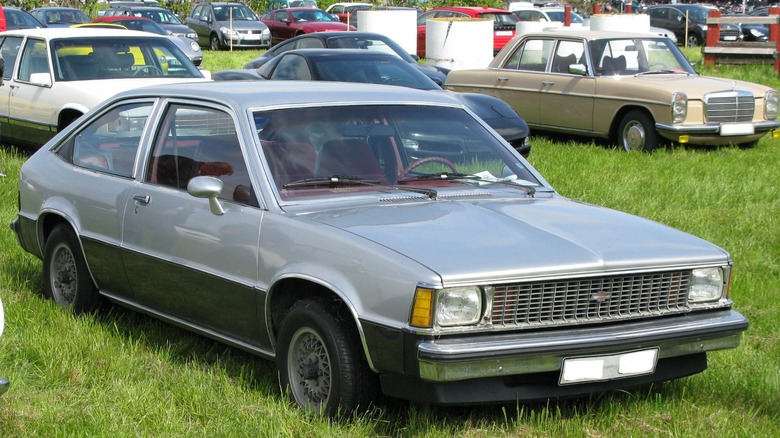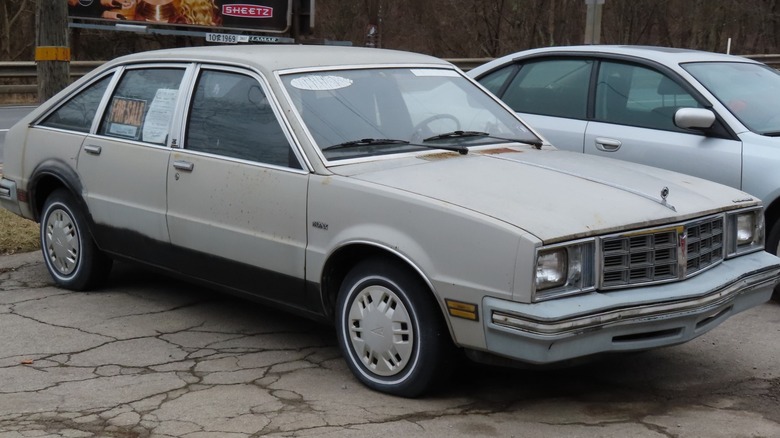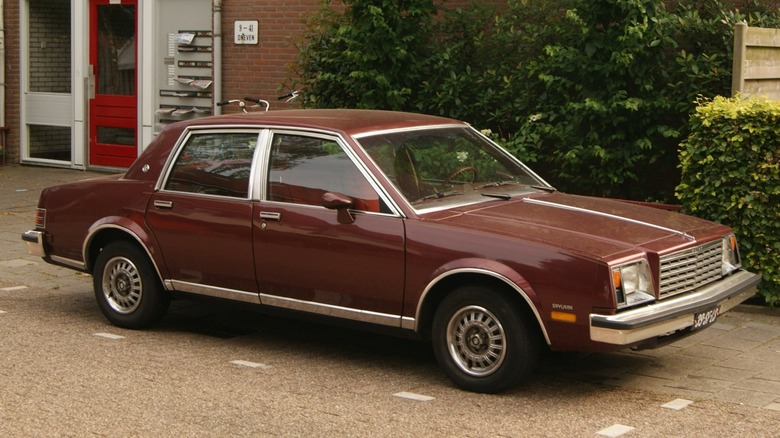These GM Models Were Chevy Citation Clones
There's no kind way to say it, but the Chevy Citation — built on the X-car platform — ranks as one of the worst cars ever made. Despite its flaws, the Chevy Citation spawned several GM X-car clones like the Buick Skylark, Pontiac Phoenix, and Oldsmobile Omega. They all offered the same engine and transmission options, as well as a variety of body styles.
Chevy Citation body styles included two-door models like the Coupe, Club Coupe, and Hatchback, in addition to its four-door Hatchback Sedan offering. The Skylark and Omega body styles included two-door coupes and four-door sedans, while the Pontiac Phoenix — incidentally one of the most hated Pontiac models ever made — offered a two-door coupe and a hatchback sedan.
Depending on the brand and configuration chosen, the X-car clone lineup could come with the much maligned 90-horsepower Iron Duke 2.5L (151-cubic-inch) four-cylinder engine, or a 2.8L (173-cubic-inch) V6 with up to 155 horsepower and a manual or automatic transmission. Standard features included a tiltable steering column, reclining front passenger seat, intermittent windshield wipers, and disc front brakes.
[Featured image by Herranderssvensson via Wikimedia Commons | Cropped and scaled | CC BY-SA 3.0]
The Chevy Citation and its X-car clones started off strong
In the late 1970s, after years of fluctuating gasoline prices punctuated by oil embargos, the gas crisis, and tightening of automotive emission regulations, GM's X-car prepared to face off against the efficient (and economical) front-wheel drive imports coming to America.
The brochure for the new Chevy Citation called it "The first Chevy of the '80s." The sales pamphlet also proclaimed the Citation as the "the first front-wheel drive with [the brand name] Chevy behind it" and "the most thoroughly tested new car in Chevy history." We're not sure how thoroughness of the testing process was measured, but it seems that different GM divisions designed various parts of the project and tried to integrate them into a functioning unit — with varying degrees of success.
Favorable reviews from the automotive press and strong initial sales numbers painted a bright future for the X-car, until the truth of the production cars' quality came crashing down. MotorTrend reports that production X-cars were inferior to the "selection of hand-assembled, near-perfect nonproduction-spec models" given to the press for testing. That phrase rung true for the Buick Skylark, Pontiac Phoenix, and Oldsmobile Omega as well.
[Featured image by MercurySable99 via Wikimedia Commons | Cropped and scaled | CC BY-SA 4.0]
The end of the Chevy Citation and its GM relatives
In addition to the sketchy rear brakes and soft suspension, the X-car clones had a tendency to rust, often with evidence showing through on two-year-old models. Also, poor adhesives and loose bolts led to trim pieces falling off inside the car as well. Fewer than 100,000 Chevy Citations were sold in 1983, and even fewer Chevy Citation II models in 1985, the last year for the X-car platform. While other Chevrolet cars have flopped, the X-car adds another spectacular example.
The Chevrolet Citation and its X-car clones failed on a number of fronts. In no particular order of magnitude, the soft suspension caused horrible handling when cornering and led to uneven tire wear. In addition, the rear drum brakes had a tendency to lock up during emergency braking leading to a loss of control compounded by the soft suspension. After two failed GM recalls and a lawsuit levied by the U.S. Justice Department, consumer demand for the clones had fallen off and the X-car platform was discontinued.
[Featured image by Niels de Wit via Wikimedia Commons | Cropped and scaled | CC BY-SA 2.0]


